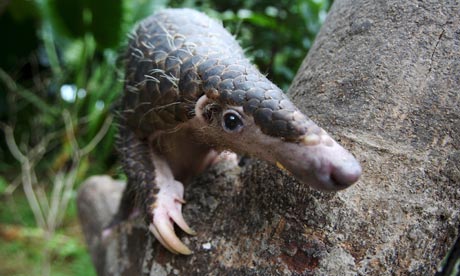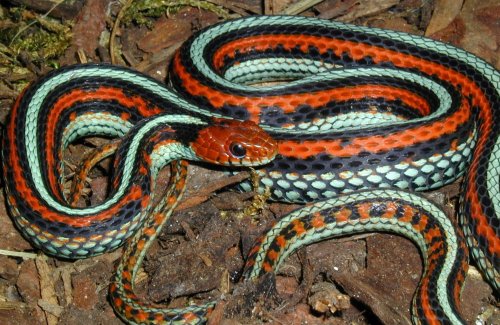 To be fair, a lot of people expend a lot of energy in the establishment of captive breeding programs, and animals that 10, 20, or 30 years ago that had care sheets that said "cannot be kept (or bred) in captivity" are now routinely bred for the insatiable publics want of material. And it's not just east Asia, comic books in the 60s urged kids to send indigo snakes in for a buck a piece or something and they were wiped out. The few remaining specimens are all tracked by a NASA satellite now. And they're majestic animals that look for all the world like a shiny dark blue cobra, and are one the most intelligent snakes, and just a pussycat of a reptile. The natural tendency is to insist on species being listed on endangered species lists published by state and federal governments as well as UN chartered intergovernmental agencies. The problem here is this makes amateur and professional captive breeding all but impossible. Consider the case of the red sided garter - Thamnophis sirtalis tetrataenia.
The snake hobby is fairly large but garters enjoy only a small following and the only story that emerged as a result of this listing of the flame sided garter was for the St Louis zoo, who had been keeping and breeding these animals for a few years. When they had far more than they needed or could care for, as they breed fairly readily, they had no market to unload them, they were illegal to even give away. Cobras have one food source: other snakes, and the St. Louis Zoo fed hundreds of these endangered animals to cobras, having no other recourse under existing laws. So, the species cannot be held or bred in the US. But it can in Canada, in theory, and is in Denmark and Germany (at least) in practice and even if the species is wiped out in California, it will still exist in captivity, ironically, in Europe. I've kept and bred killifish for decades. These small fish are not in the commercial pet trade and are only discovered and bred by hobbyists who have become so adept at this over time there are species extinct now in the wild but exist in the home aquaria of killifans all over the world in ad hoc species preservation program. This is possible, because there are no killifish on the CITES lists that control international trade of animals, and this is because one very clever killifan made the compelling argument that listing killifish on the CITES list would almost certainly doom several species to extinction. So while species preservation in the wild is a desirable goal, we must be careful that actions taken actually benefit, and do not harm, the animal being protected.
|
